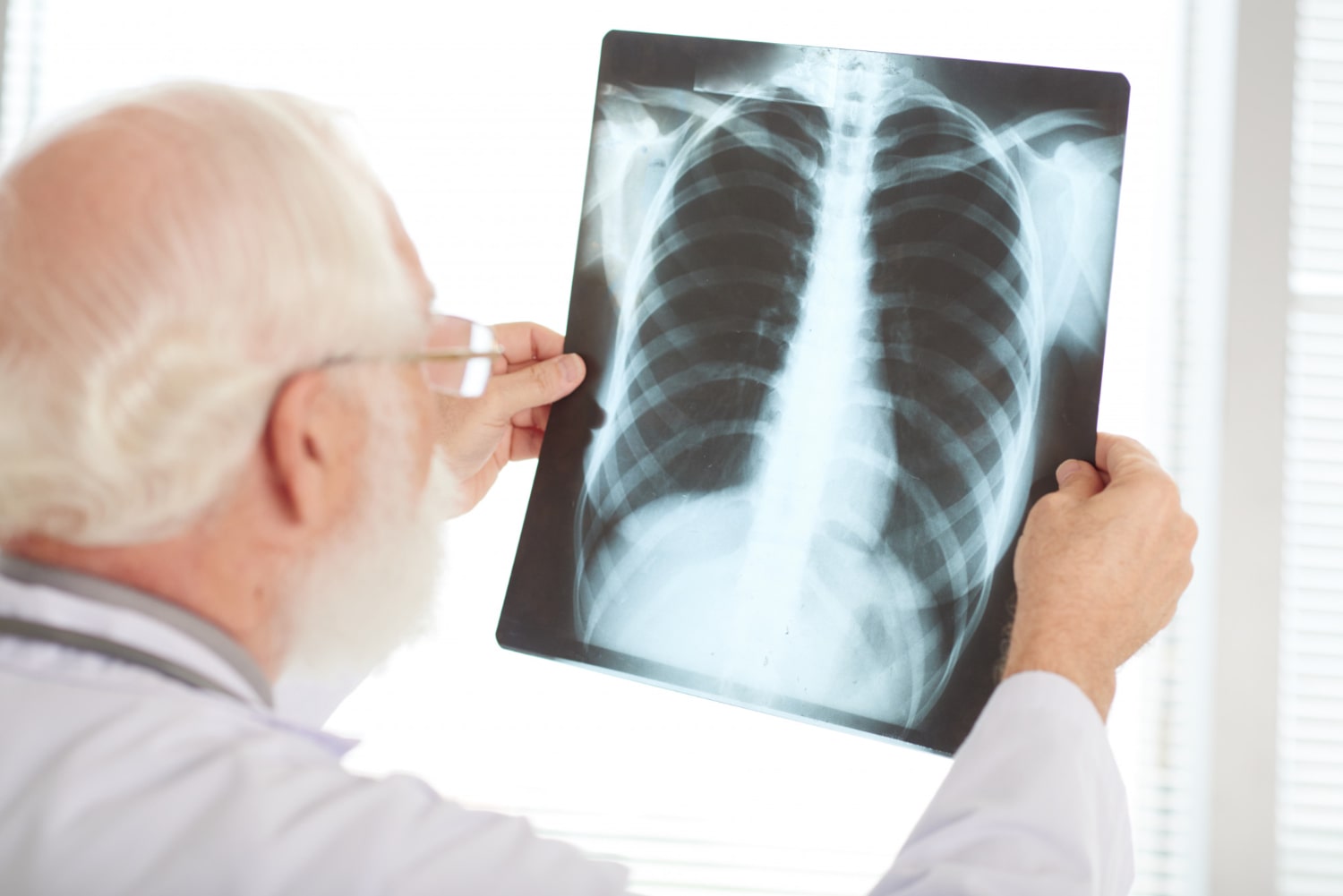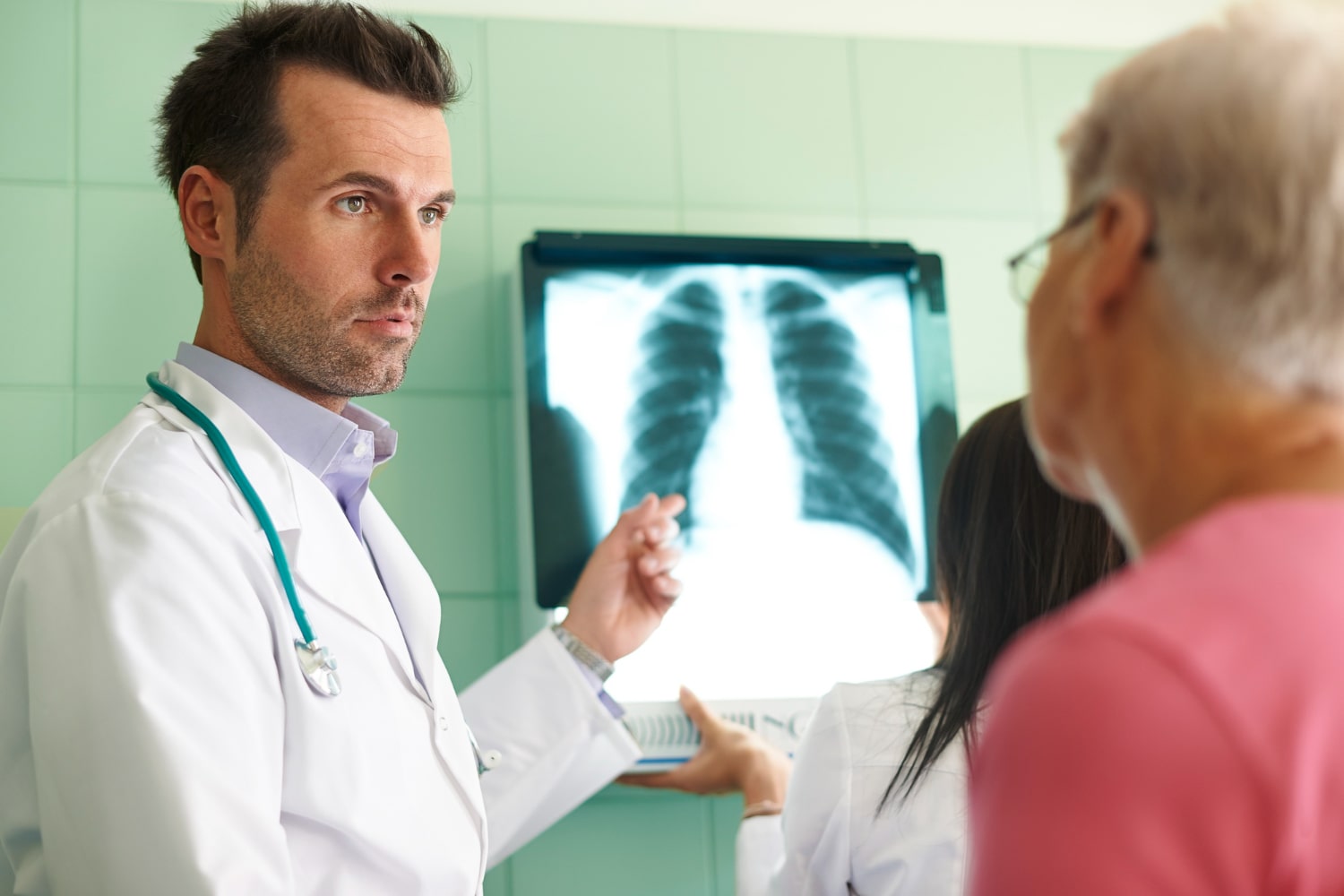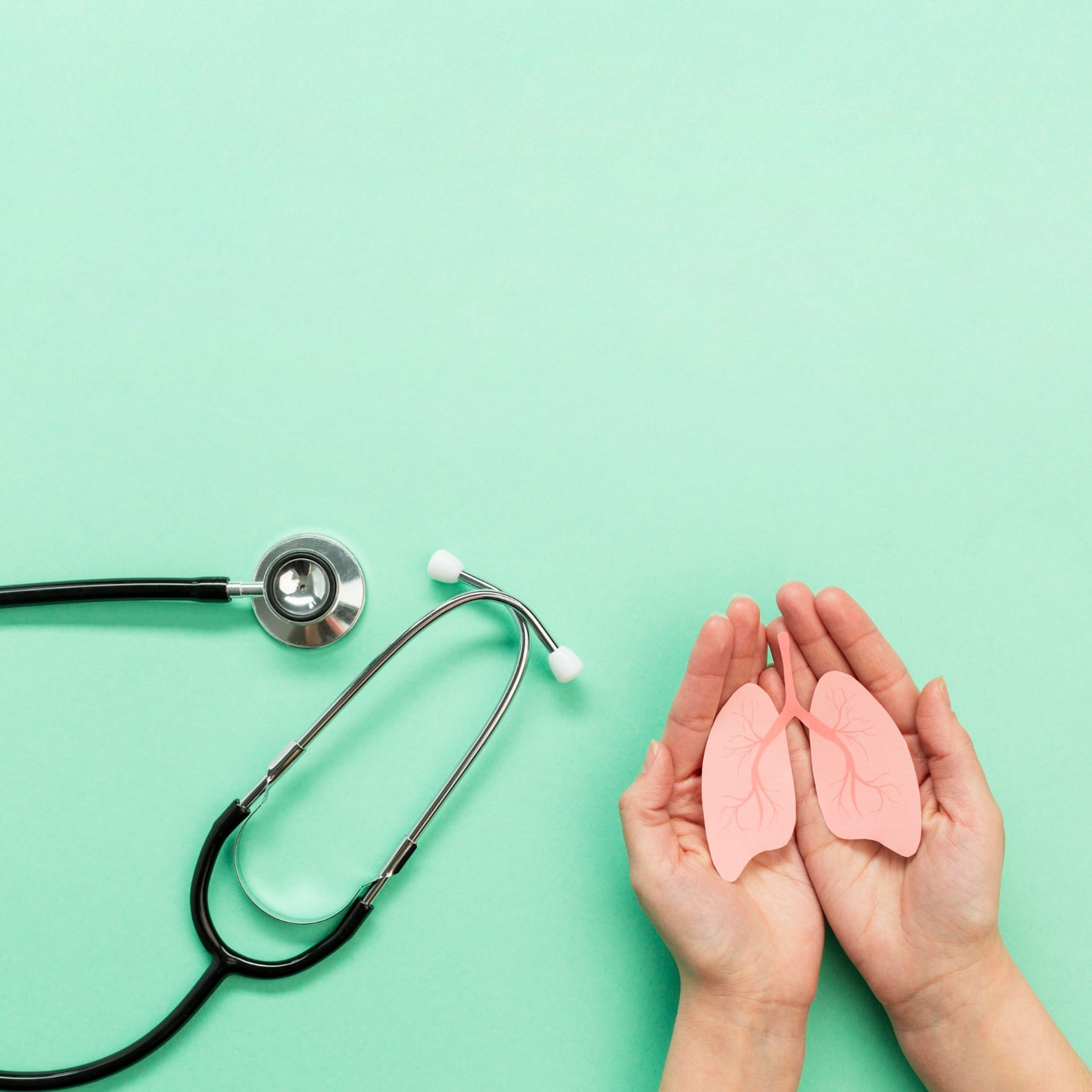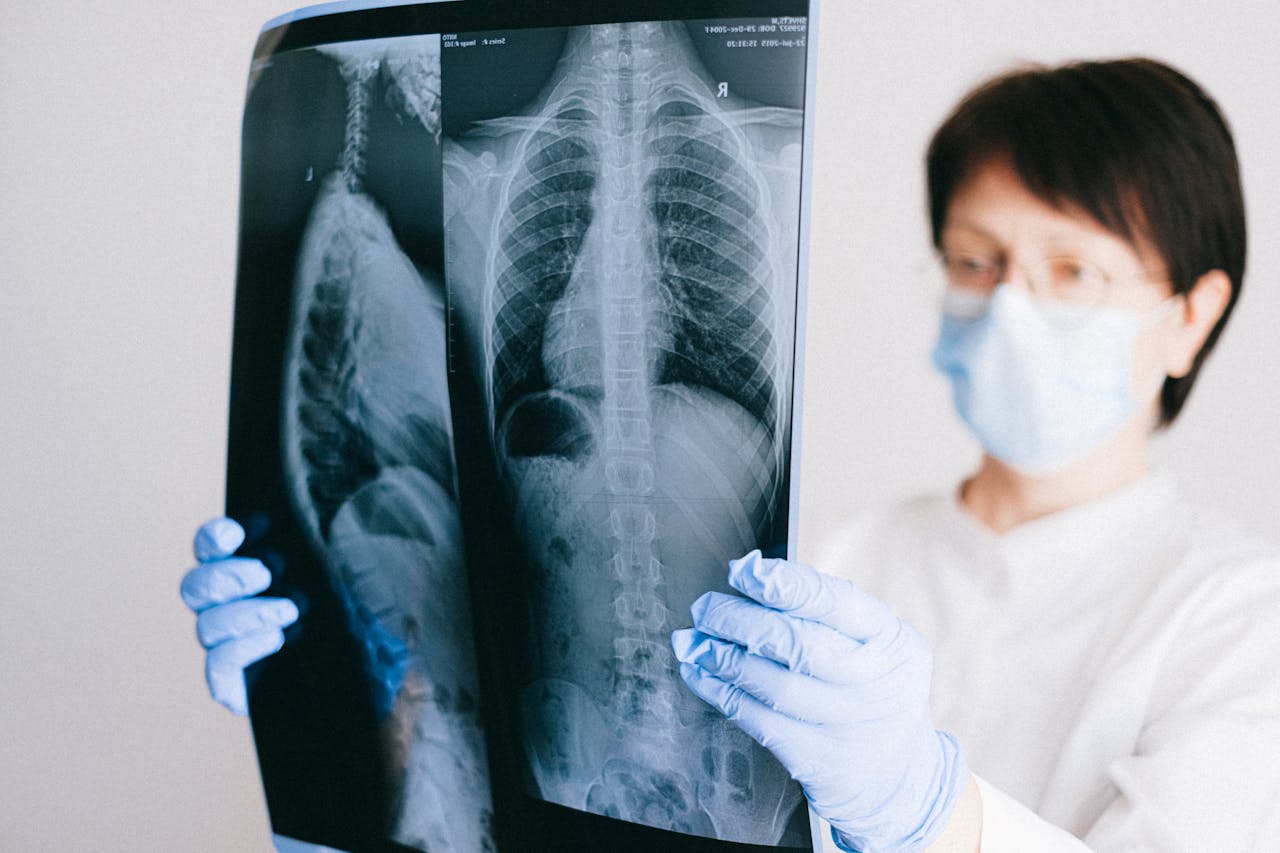Symptoms of lung nodules rarely occur. In most cases, these symptoms are absent, and nodules are often detected during routine check-ups or tests conducted for other diseases. However, in some cases, certain symptoms may appear depending on the size and location of the nodule. Below, you can find detailed information about lung nodule symptoms.
What Are the Symptoms of Lung Nodules?

Lung nodules are round-shaped structures smaller than 3 cm, usually with smooth borders. Nodules caused by various factors generally do not produce any symptoms. The rarely observed symptoms of lung nodules include the following:
1 – Persistent Cough
A persistent and unrelenting cough is among the symptoms of lung nodules. If the cough continues despite various treatments, it raises concerns about potential lung issues. In some cases, coughing may be accompanied by blood, indicating a more serious condition.
2 – Shortness of Breath
Shortness of breath may occur if the nodule compresses the airways or tissues due to its size and location. Patients in such cases may struggle to breathe comfortably and try to compensate for their oxygen needs by breathing more rapidly. This symptom can vary in severity.
3 – Wheezing
Wheezing is caused by nodules narrowing the airways and is a common symptom of lung nodules. Each breath may produce a wheezing sound, which can range from mild to more noticeable in severity.
4 – Loss of Appetite
Unexplained and persistent loss of appetite is another symptom of lung nodules. This is often associated with malignant tumors. Patients experiencing continuous loss of appetite should seek medical attention promptly.
5 – Fatigue
Fatigue and weakness are symptoms associated with malignant nodules. Cancer cells consume excessive energy, causing the body to become fatigued. These symptoms are also considered part of lung nodule signs.
6 – Chest Pain
Nodules can exert pressure on tissues and nerves based on their size and location, leading to noticeable chest pain. This pain may become more pronounced during deep breathing, physical exertion, or heavy work.
7 – Infections
Infections associated with lung nodules tend to recur frequently. Despite treatment, infections may reappear after a short period due to the location of the nodules increasing the likelihood of infection.
Although there are several symptoms of lung nodules, it is important to note that they rarely manifest. In many cases, individuals may not even be aware of the nodules in their lungs. The fact that most nodules are benign and do not require treatment also contributes to this.
What Causes Lung Nodules?
Lung nodules can arise due to various factors. The details of these causes are shown in the table below:
| Category | Cause | Description |
|---|---|---|
| Non-Cancerous (Benign) Causes | Bacterial Infections | Infections such as pneumonia can lead to nodules. |
| Tuberculosis | Tuberculosis can cause the formation of nodules in the lungs. | |
| Fungal Infections | Fungal infections like histoplasmosis or aspergillosis are among the causes of nodules. | |
| Sarcoidosis | A systemic disease that leads to abnormal structures in the lungs. | |
| Hamartoma | A benign tumor of the lung that usually does not require treatment. | |
| Rheumatoid Arthritis | An autoimmune disease that can cause nodules in the lungs. | |
| Malignant Causes | Lung Cancer | Primary lung tumors often show rapid growth and invasion of surrounding tissues. |
| Metastasis | Nodules may appear due to cancer spreading from other parts of the body to the lungs. | |
| Pre-Cancerous Lesions | Pre-cancerous formations require regular monitoring or early intervention. |
How Are Lung Nodules Diagnosed?
 Since lung nodule symptoms rarely appear, diagnosis is often made during routine check-ups. Detecting millimeter-sized nodules on chest X-rays is difficult, so computed tomography (CT) scans are preferred. CT imaging can detect even very small nodules.
Since lung nodule symptoms rarely appear, diagnosis is often made during routine check-ups. Detecting millimeter-sized nodules on chest X-rays is difficult, so computed tomography (CT) scans are preferred. CT imaging can detect even very small nodules.
Diagnosis is not limited to identifying the presence of a nodule in the lungs. Determining whether the nodule is benign or malignant, as well as its risk level, is extremely important. Treatment or monitoring decisions depend entirely on this process.
In most cases, nodules detected via CT are benign and do not require treatment. However, if the nodule is malignant, it must be surgically removed to prevent it from progressing to lung cancer. Conversely, unnecessary surgical removal of a benign nodule exposes patients to the risks of surgery. Therefore, it is essential to determine whether the nodule is benign or malignant.
Biopsy is performed to clarify the condition of the nodule. The biopsy sample is sent to pathology, and treatment or monitoring decisions are made based on the results. Since lung cancer symptoms are rare, the results of medical examinations are the primary determinants during this process.
How Are Lung Nodules Evaluated?
Lung nodules identified through symptoms or routine check-ups are evaluated based on specific criteria, including:
- Size
- Type
- Patient history
The size of the nodule is a significant indicator of its risk level. Most nodules are small, with a size below 1 cm. The smaller the size, the less likely symptoms are to appear. However, the risk increases with size. For instance, nodules smaller than 3 mm have a 0.2% chance of being cancerous, while those larger than 20 mm have up to a 64% chance.
Size is a critical factor but is not evaluated in isolation. Other characteristics, such as the nodule’s structure and borders, are also assessed. Irregular borders significantly increase the risk. Additionally, the density of the nodule, such as whether it appears solid, ground-glass, or subsolid, provides essential information.
Based on the evaluation, if the nodule is determined to be high-risk or malignant, treatment is necessary. If it is benign, neither treatment nor monitoring is required. For low-risk nodules, regular monitoring is considered sufficient.
How Are Lung Nodules Treated?
Although lung nodule symptoms are uncommon, many cases are diagnosed during routine check-ups or tests for other diseases. If nodules are determined to be high-risk or malignant based on evaluations or pathology results, treatment involves surgical removal of the nodule.
There are two methods for surgery: open and minimally invasive (closed). If the location and size of the nodule are suitable, the minimally invasive method is preferred. In this method, a small incision is made on the side of the chest, and a camera is inserted. The nodule is located using the obtained images and removed with a specialized medical instrument. The incision is then closed, completing the procedure. Treatment eliminates lung nodule symptoms (if present) and the risk of cancer.
For successful treatment, it is crucial that the procedure is performed by experienced thoracic surgeons. Prof. Dr. Semih Halezeroğlu is one of the leading surgeons in this field, with expertise in removing nodules. For more information about lung nodule symptoms and treatment methods, you can contact him.
Do Lung Nodules Disappear?
 In some cases, lung nodules may shrink and disappear over time. However, this is rare and does not eliminate the need for monitoring. Nodules detected via CT scans must be closely monitored. Patients should not rely on the possibility of spontaneous disappearance and must adhere to follow-up and treatment processes to avoid significant risks.
In some cases, lung nodules may shrink and disappear over time. However, this is rare and does not eliminate the need for monitoring. Nodules detected via CT scans must be closely monitored. Patients should not rely on the possibility of spontaneous disappearance and must adhere to follow-up and treatment processes to avoid significant risks.
Frequently Asked Questions About Lung Nodule Symptoms
Frequently asked questions and answers about lung nodule symptoms are given below.
1 – Does Lung Nodule Cause Cough?
Just like other lung nodule symptoms, cough rarely occurs. It is a known condition that cough symptoms do not occur or are not seen in many cases.
2 – How Many mm Does Lung Nodule Require Surgery?
In order to decide on surgery, not only the size of the nodule but also the characteristics of the nodule and the risk factors in the patient should be considered. Factors such as smoking history, previous cancer history, and the presence of lung cancer history in the family increase the risk and therefore the possibility of surgery.
3 – When Do Lung Nodule Symptoms Appear?
Lung nodule symptoms rarely occur. It is known that they are not seen in many cases.
4 – Which Foods Destroy Lung Nodules?
Nodules disappear only through medical processes. In some cases, nodules may shrink on their own, but this is rare.
5 – How to Cleanse Lung Nodules?
These structures detected by lung nodule symptoms or routine check-ups are removed from the lungs by surgical procedures. There is no possibility of cleaning nodules with herbal cures or similar methods. Such cures should never be used without doctor’s approval.



